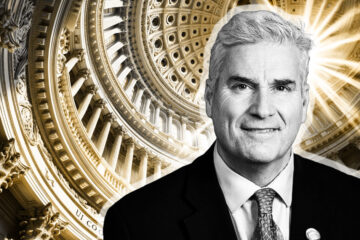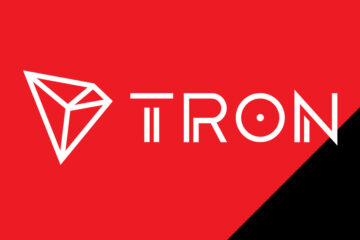Ethereum Foundation (EF) executive director Aya Miyaguchi will step down from her current role and transition into a new position as the foundation’s president amid a revamp of its leadership structure.
Miyaguchi announced the change in a Feb. 25 statement and said a new governance model is expected soon. She added that her new role as president will focus on strengthening institutional relationships and expanding Ethereum’s (ETH) broader vision and culture.
She described the transition as an opportunity to reflect on Ethereum’s decentralized ethos, especially in light of recent debates surrounding the network’s performance and ETH’s market value.
She added that Ethereum’s strength lies in its permissionless nature, where open discourse contributes to resilience rather than division.
Vitalik Buterin, Ethereum’s co-founder, acknowledged Miyaguchi’s contributions during her tenure, emphasizing her role in fostering an environment conducive to innovation. He shared on X:
“As I see it, the role of an ED is to create an environment where others can shine and do their best work, and so every success of the EF – the steady execution of Ethereum hard forks, client interop workshops, Devcon, Ethereum’s culture and steadfast commitment to its mission and values, and more – is in part a result of Aya’s stewardship.”
Independent from entities
Miyaguchi reaffirmed that the foundation’s role is not to exert control over Ethereum but to uphold its principles of credible neutrality.
She emphasized the organization’s philosophy of subtraction, a design approach that seeks to reduce systemic imbalances rather than impose rigid structures. This strategy has guided the foundation’s decision-making process and helped ensure that Ethereum remains decentralized and adaptable.
Key examples of this philosophy in action include the “All Core Dev” calls to enable community-driven technical decision-making, promoting client diversity to mitigate single points of failure, and facilitating research and development.
Additionally, the foundation coordinated The Merge, Ethereum’s transition to proof of stake, as a decentralized and collaborative effort.
Miyaguchi assessed that Ethereum operates through a decentralized leadership model, mainly through events like Devcon and Devconnect, which are gatherings to drive progress in their respective ecosystems.
In this landscape, EF’s approach prioritizes nurturing leadership across diverse communities, fostering organic collaboration without centralized oversight.
She also noted that Ethereum’s continued success hinges on its ability to adapt without resembling traditional corporate structures. The EF’s strategic focus has shifted from direct execution to broader facilitation, ensuring that Ethereum’s growth remains aligned with its decentralized principles.
Pressure over ETH’s performance
Based on CryptoSlate data, Ethereum climbed 42% in 2024, but its performance was heavily overshadowed by Bitcoin’s (BTC) and Solana’s (SOL), which climbed 112% and 73%, respectively, during the year.
The Ethereum Foundation has faced criticism for ETH’s underperformance due to its constant sales on public trading platforms. As of Jan. 27, EF had sold nearly $1 million in ETH via three different transactions.
In response to the community’s concerns, the foundation allocated 50,000 ETH to different decentralized applications to earn yields based on their treasury instead of selling their Ether stash as part of their new management model.
Miyaguchi also received criticism for allegedly failing to sufficiently foster Ethereum’s growth, which contributed to its underperformance in 2024.
Mentioned in this article


 Bitcoin
Bitcoin  Ethereum
Ethereum  Tether
Tether  XRP
XRP  Solana
Solana  USDC
USDC  Lido Staked Ether
Lido Staked Ether  TRON
TRON  Dogecoin
Dogecoin  Cardano
Cardano  Figure Heloc
Figure Heloc  WhiteBIT Coin
WhiteBIT Coin  Wrapped stETH
Wrapped stETH  Wrapped Bitcoin
Wrapped Bitcoin  Bitcoin Cash
Bitcoin Cash  Hyperliquid
Hyperliquid  Chainlink
Chainlink  USDS
USDS  LEO Token
LEO Token  Binance Bridged USDT (BNB Smart Chain)
Binance Bridged USDT (BNB Smart Chain)  Stellar
Stellar  WETH
WETH  Wrapped eETH
Wrapped eETH  Zcash
Zcash  Monero
Monero  Ethena USDe
Ethena USDe  Coinbase Wrapped BTC
Coinbase Wrapped BTC  Litecoin
Litecoin  Avalanche
Avalanche  Hedera
Hedera  Sui
Sui  Shiba Inu
Shiba Inu  World Liberty Financial
World Liberty Financial  Dai
Dai  Cronos
Cronos  Toncoin
Toncoin  Ethena Staked USDe
Ethena Staked USDe  Uniswap
Uniswap  sUSDS
sUSDS  Polkadot
Polkadot  PayPal USD
PayPal USD  USDT0
USDT0  Mantle
Mantle  Canton
Canton  Bittensor
Bittensor  Aave
Aave  USD1
USD1  Bitget Token
Bitget Token 


